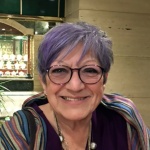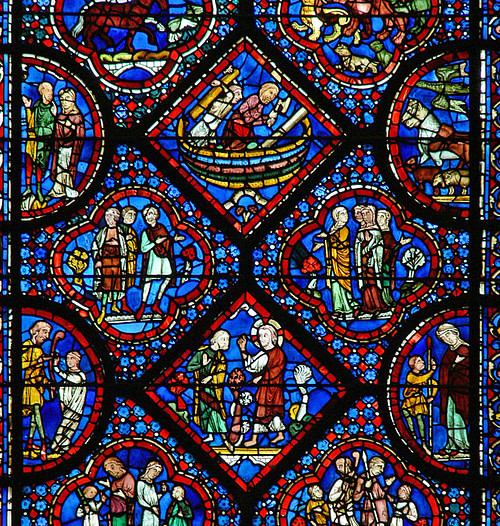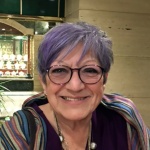Apocalypse (Greek: apokalypsis, an "unveiling of secrets") is not an event, but a text that contains prophesies concerning God’s future intervention, and apocalypticism is a reference for attitudes and worldviews in biblical and non-canonical texts that share concepts in the belief that the God of Israel will intervene in human history one more time to address perceived ills of society.
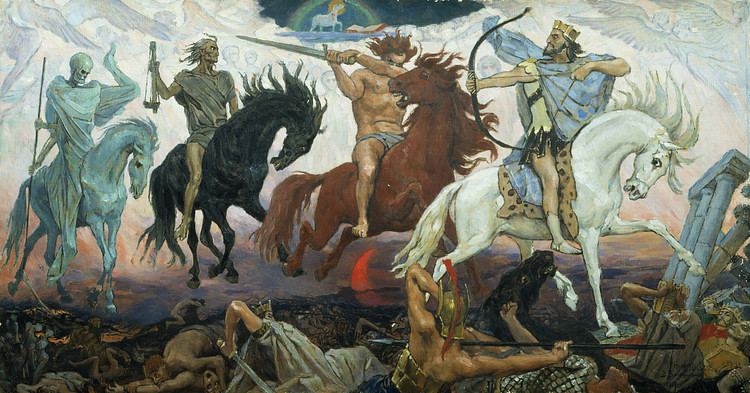
Apocalyptic texts utilize religious concepts to critique perceived oppressive governments as well as social and cultural views of others beyond their group. In modern terms, 'apocalyptic' is used to describe great catastrophes. Eschatology (Greek: eschaton, "final days") is the study of apocalyptic texts that prophesy the “final days,” when God will institute his kingdom on earth. Historians apply the phrase, "apocalyptic eschatology."
Apocalyptic Ideas in the Ancient World
Ancient cultures believed the gods both controlled and intervened in the lives of humans. Law codes, issued by the gods, organized human behavior. Periodically, crises occurred. An Assyrian tablet (c. 2800 BCE) bemoaned the state of affairs (that sounds strangely modern):
Our Earth is degenerate in these later days; there are signs that the world is speedily coming to an end; bribery and corruption are common; children no longer obey their parents; every man wants to write a book and the end of the world is evidently approaching.
Stories emerged that sometimes the gods decided to start over. Egyptian mythology had a story that the sun god, Ra, sent the goddess Sekhmet to punish humans. Mesopotamia produced The Epic of Gilgamesh, where the gods sent a major flood to destroy the corruption on earth. Such flood stories were common; the Jews had their story of Noah, and Greek mythology featured Deucalion who saved humanity. The state cult of the Persian Empire, Zoroastrianism, taught that in the end, there will be a battle between the universal forces of good and evil. A resurrection of the dead will follow, with souls undergoing ordeals as they are judged.
Ancient Judaism emerged in a linear timeline; there is a beginning (creation), and so there will be an end. In the Jewish Scriptures, the history of the nation related the many times that God had manifested himself on earth to act, either to punish them or to save them from a crisis. Israel suffered two national disasters: in 722 BCE, Assyria invaded the Northern Kingdom of Israel and carried off ten tribes into exile, and in 587, the Babylonian Empire conquered and destroyed the city of Jerusalem and the Temple. These historical events created a crisis of belief. If God had a covenant (contract) with the Jews, why did he not protect them?
Jewish Restoration Theology
The Prophets of Israel addressed this crisis. God still reigned supreme, but he had permitted those nations to punish Israel for its sins. The great sin was idolatry. At the same time, however, they offered a message of hope that God would intervene one more time and all the evils of the world would be eliminated. Israel would be restored to its initial glory.
The scholarly rubric for this message of hope is known as Jewish Restoration Theology:
- God would intervene one final time, in the "final days", also known as "the day of God’s wrath".
- At that time, God will raise up a messiah ("anointed one") from the line of King David. The messiah will lead God’s army of angels and good humans against the wicked.
- God will recognize a small group of believers who had not sinned, the "righteous remnant", who remain loyal through catastrophic events.
- Those Jews living in exile, outside of the land of Israel, would be gathered in and return.
- Some Gentiles (non-Jews), would "turn" (repent) and worship the God of Israel.
- There would be a final battle between Israel and the rest of the nations.
- After God’s victory, all the dead will be raised and judged. The wicked will be sent to Gehenna (an earlier form of Hell), and the righteous will receive what God originally intended, utopia, a new Garden of Eden on earth. This is what the Prophet Isaiah meant when he said, "the wolf will live with the lamb" (Isaiah 11:6) and people "will beat their swords into plowshares" (Isaiah 2:4).
The "final days" or the "end of days" was never understood as complete annihilation; God would never destroy his original creation. After Noah’s flood, the earth still existed. Rather, it would mark the end of an age; life as now understood would be totally transformed and replaced with God’s kingdom on earth.
The Greek Conquest of Israel
When Alexander the Great (r. 336-323 BCE) conquered all the lands that bordered the Mediterranean Basin, he instituted all aspects of Greek language and culture in the region. Along with other ethnic groups, the Jews adopted these ideas, particularly in understanding the concepts of Greek philosophy regarding the relationship between the universe (the cosmos) and humans. This is when we find the emergence of different groups of Jews, known as Jewish sects. Many Jews struggled to find a place in this new cosmopolitan world but also wanted to maintain their unique ethnic identity markers (such as circumcision and dietary laws). The Jews successfully revolted against Greek rule in 167 BCE (the Maccabean Revolt), and the family of the Hasmoneans who led the revolt then ruled Israel.
Written in this period, Daniel is the only apocalypse that is included in the Jewish Scriptures, and Christians later retained it because it is quoted in Jesus’ trial before the Sanhedrin. It relates older stories of the Jews under Babylonian rule but also has visions of the end times. Chapter 7 related Daniel’s apocalyptic vision of beasts from the sea, describing each one in animal forms. One after another, they are devoured. An angel revealed that that the four beasts represent four kings, and the fourth one would war against the "holy people" for " a time, times and half a time" (7:25). Scholars debate the identity and timing of the four kingdoms.
In my vision I looked, and there before me was one like a son of man, coming with the clouds of heaven. He approached the Ancient of Days and was led into his presence. He was given authority, glory and sovereign power; all nations and peoples of every language worshiped him. His dominion is an everlasting dominion that will not pass away, and his kingdom is one that will never be destroyed. (7:13-14)
The Dead Sea Scrolls
Disagreeing with the Hasmonean rule, some Jews, known to history as the Essenes, left Jerusalem and settled at Qumran on the Dead Sea (c. 150 BCE) to await God’s final intervention. In 1947, the scrolls from their library were recovered. The scrolls provide a window to this ancient apocalyptic community. By this time, traditional Prophets had been replaced by seers. These men experienced out-of-body journeys to the heavens, where they were shown the secrets of the final days. These texts claimed either angels or one of the patriarchs of Israel served as their guide in heaven. Works were attributed to figures like Enoch, Moses, Isaiah, David, Solomon, and Ezra.
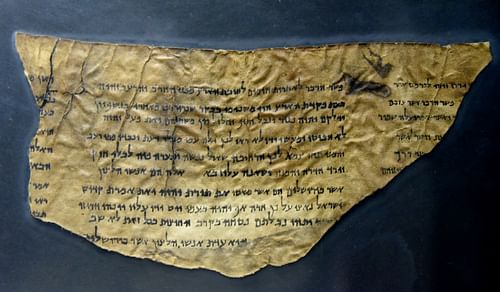
Maintaining the basic elements of Jewish Restoration Theology, the Essenes reframed their beliefs through polarized concepts:
- All history was divided into two mutually exclusive time periods, the current evil age and the age to come.
- Humanity was also divided between the "sons of light" (the Essenes) and the "sons of darkness." There was no gray area in-between. There was no eleventh hour for repentance; it was too late. History was predestined by God, and human efforts were not able to change it.
- Purity was maintained within the righteous remnant. The Essenes had community rules that were designed to keep their community pure and not tainted by outsiders. This meant avoidance of the dominant culture, both Jewish and Greco-Roman.
- Whereas the Prophets of Israel posited a final battle between Israel and the nations, the final battle would now encompass all the forces of the universe, good and evil. All who disagreed with the Essenes were described as agents of Satan. Satan would be destroyed in the final battle.
- The drama of apocalyptic thinking was enhanced by lurid scenes of violence and destruction that awaited the sons of darkness. The conviction was that this age was so corrupted that only violent action would cure it. Tribulations preceded the end. These were the warning signs of the final intervention; wars, famine, plagues.
- Apocalypses used coded language and symbols. They were written in times of crisis or persecution by the current rulers or competing groups of believers, and as such, they were subversive literature that criticized the current regime. In the ancient world, such criticism was construed as treason, which always carried the death penalty. By framing their prophecies of future events within codes or buzzwords, only a selected group understood the references. No real names or places were mentioned, and this provided apocalyptic texts with an incredible elasticity in relation to interpretation over the centuries. Apocalyptic texts were (and remain) updated as regimes and cultures changed over time.
Jesus of Nazareth, an Apocalyptic Prophet
In Mark’s gospel (c. 70 CE), Jesus was introduced with the proclamation, "... the kingdom of God has come near. Repent ..." (1:14). By the 1st century CE, the list in Jewish Restoration Theology had been reduced to a short-hand phrase, the kingdom. This is the "good news" (gospel) that was preached by the followers of Jesus after he died. Both the gospels and the letters of Paul consistently quote the Prophets to claim that the end-time was manifest in the life and teachings of Jesus Christ. Mark’s preferred title for Jesus is the "son of man" from the book of Daniel. Later Christian theology would claim that, as the son of man, Jesus was pre-existent and present at God’s creation.
The historical context for Mark’s gospel is the Great Jewish Revolt of 66 CE, where Rome destroyed the city of Jerusalem and the Temple complex. Mark 13 is described as the little apocalypse:
As Jesus was leaving the temple, one of his disciples said to him, "Look, Teacher! What massive stones! What magnificent buildings!" "Do you see all these great buildings?" replied Jesus. "Not one stone here will be left on another; everyone will be thrown down." (13:1-2)
Mark telescoped the time between the ministry and current events by having Jesus predict that the Temple would be destroyed by Rome. For Mark, this was the first sign of the end.
Paul (writing in the 50s and 60s CE) also proclaimed the message of the coming kingdom, with an urgency of the impending crisis. But why had the kingdom not been instituted when Christ was on earth? An early Christian rationalized that Jesus was coming back. Then all the elements of the kingdom would be fulfilled. This concept was known as the parousia, the second appearance.

Paul’s letters to his communities detailed how the entire universe would be transformed. All social conventions would be upended: In the kingdom, "there is neither Jew nor Gentile, neither slave nor free, nor is there male and female" (Galatians 3:28). While awaiting the return, his communities were to live proleptically, as if the kingdom were already here. Paul saw the delay as time for him to finish his calling by God, to be the Apostle to the Gentiles.
As the decades passed, Christian communities were established throughout the Roman Empire. While waiting for the end of the age, Christians developed hierarchy (the election of bishops) and rules for behavior for believers. The separation of Christianity from Judaism was complete by the 2nd century CE. The Church was now a model of the kingdom until Christ returned. The afterlife was no longer construed as being on earth, but as rewards and punishments in either Heaven or Hell. During this era, Christian apocalypses were produced (attributed to Paul, Peter, and others). The Apocalypse of Peter provided one of our first tours of Hell, with the detailed tortures that awaited different categories of sins. The later version of this is found in medieval literature, namely in Dante Alighieri’s Inferno.
The Book of Revelation by John of Patmos
During the reign of Domitian (r. 81-96 CE), Christians were persecuted for their refusal to participate in the imperial and state cults of Rome. Christians were charged with atheism, or disbelief in the gods. This was a crime, that of treason, as angering the gods meant that you could threaten the prosperity of the Empire. Thus, Christians were sent to the lions for their refusal to honor the gods.
Perhaps one of the most famous apocalyptic books was written by John, a Christian who was exiled on the island of Patmos near the end of the 1st century CE. He recorded his visions of the final days, utilizing the books of Daniel and Ezekiel. Like the Essenes, John envisioned a world that was polarized between good and evil; Christians and Rome. In terms of symbolic language and images, Revelation is one of the most complicated of apocalyptic texts.
John was taken to the heavens, where he envisioned everything in sevens and twelves, sacred numbers in Judaism. He witnessed the release of the Four Horsemen of the Apocalypse, who represent all the evils that are going to be unleashed on earth. Angels open scrolls, one at a time, foretelling the disasters to come. John claimed that Satan (originally one of God’s angels), had earlier been consigned to Hell in chains. (This is the source of the idea of Satan’s fall from Heaven.) Satan sends his agent, the Deceiver to earth. The term, "anti-Christ" does not appear in this text but has become a byword for this agent. He will deceive people into believing that he is good. Over the centuries, many individuals have been assigned the role of anti-Christ: Attila the Hun in the 5th century CE, Napoleon, and of course, Hitler and Stalin. Those who follow the Deceiver are marked with a secret sign, "666". Speculation remains centered on the meaning of this number.
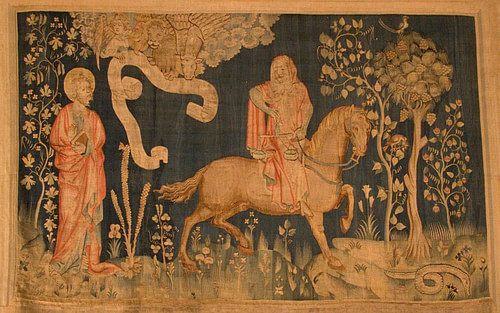
John claimed that Christ would return to earth and rule for a thousand years. This idea of the millennium was later mistaken for the earth’s clock. In the year 1000, Christians in Europe were preoccupied in attempts to establish a timeline that decoded predicted events, especially from the Empires listed in the book of Daniel. When we reached the year 2000, rumors were abundant about the Y2K virus that would destroy our computers.
In the final battle, the armies of God will meet in the town of Megiddo and move south to Jerusalem. Described as being located near the mountain of Megiddo (Hebrew: har-megeddan), the term "Armageddon" became synonymous with the final battle and is often used as a modern metaphor. In the end, Satan is released from Hell and is defeated by Christ. A new Temple descends in a new Jerusalem and God’s kingdom finally begins.
The concept known as the "Rapture" does not appear in the Book of Revelation. An 18th-century British minister was worried about the expected tribulations. How could good Christians not get caught in the crossfire when God unleashed the coming destruction? He turned to Paul’s first letter to the Thessalonians, where Paul described what would happen when Christ returned, in that "we who are still alive, who are left until the coming of the Lord" (4:15) at the time would be transported to the heavens to welcome Christ. This is what he called the rapture – that right before the end, the faithful would be taken up to save them from the impending violence and destruction.
There are several books and cable productions known as the Left-Behind series that describe life on earth after the beginning of the end, for those who were not pure enough to be taken up in the first rapture.
Apocalyptic Ideas in Islam
In reforming traditional Judaism and Christianity, the Prophet Muhammad (570-632 CE) retained the same ideas of the end times. The Day of Judgement (Arabic: Yawm al-Qiyāmah), is when all the dead will be raised and judged accordingly. In the interim, Muslims are joined by two angels in their graves who show them images of what awaits them either in Heaven or in Hell.
The Legacy of Apocalyptic Thought
The Book of Revelation has been interpreted many times over the centuries and each generation describes their own evaluations of who is good and who is evil. In historical context, the original book was dominated by revenge against the Roman Empire at the time.
When Martin Luther protested the corruption of the Vatican and the Catholic Church (1519), various groups of Christian communities were established as Protestant denominations. The Book of Revelation became popular when these denominations were persecuted in Europe (Calvinists, Anabaptists, Puritans, Pilgrims). Emigrating to America, the new promised land, rules for behavior were established to keep themselves as the righteous remnant, until the return of Christ.
As a genre, science fiction contains a critique on contemporary society. Taking place in the future, stories detail the way in which society has addressed problems (or not). The influence of apocalyptic ideas dominates Hollywood’s productions of post-nuclear societies, often with a remnant of survivors who struggle to make their way in a radically altered world. More currently, apocalyptic scenarios are being utilized in discussions of climate change.
Turning to the Bible for validation of one’s views, provides a conviction that today’s current ills will eventually be resolved by divine intervention.
